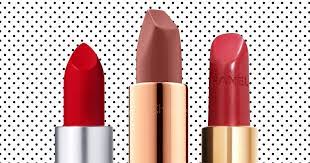 27 May 2023, 08:39
27 May 2023, 08:39 Lipstick has long been an essential component of a woman's beauty routine, adding color, vibrancy, and confidence to any look. As women explore various lipstick options, it is crucial to understand the chemistry behind these products. Lipsticks are not just pigmented waxes; they contain a carefully formulated combination of chemicals that enhance their color, texture, longevity, and overall performance. In this article, we will delve into the world of lipstick chemistry and discuss some of the top lipstick choices for women.
- Pigments: Adding Color and Depth At the heart of every lipstick lies the pigments that give it its vibrant hue. Lipstick pigments can be divided into two types: organic and inorganic.
a) Organic Pigments: Organic pigments are derived from natural sources and provide a wide range of shades. They are typically more vibrant and offer a variety of finishes, including matte, satin, and shimmer. Organic pigments are often made from plant extracts, such as beetroot, berries, and flowers, providing a natural and eco-friendly option for lipstick enthusiasts.
b) Inorganic Pigments: Inorganic pigments are synthetically created and offer a broader spectrum of colors. These pigments provide excellent color stability and longevity. Popular inorganic pigments used in lipsticks include iron oxides, titanium dioxide, and ultramarines.
- Emollients and Oils: Ensuring Smooth Application Emollients and oils play a vital role in lipstick formulation by ensuring a smooth and even application. These ingredients hydrate and moisturize the lips, preventing dryness and flakiness.
a) Natural Oils: Many lipsticks incorporate natural oils, such as jojoba oil, coconut oil, or almond oil. These oils nourish the lips, providing hydration and suppleness.
b) Synthetic Emollients: Synthetic emollients like petrolatum, lanolin, and mineral oil are often used in lipstick formulations. They create a protective barrier on the lips, preventing moisture loss and keeping the lips soft and smooth.
- Waxes: Creating Structure and Longevity Waxes are crucial components in lipstick formulation as they provide structure, shape, and longevity. They also contribute to the lipstick's texture and help it adhere to the lips.
a) Beeswax: Beeswax is a commonly used natural wax in lipsticks. It adds structure and thickness, allowing the lipstick to retain its shape while providing a smooth and comfortable application.
b) Carnauba Wax: Derived from the leaves of the carnauba palm, carnauba wax is a plant-based wax that offers a glossy finish and enhances the lipstick's durability.
c) Candelilla Wax: Obtained from the candelilla shrub, candelilla wax is another natural wax used in lipstick formulations. It provides a smooth texture and contributes to the lipstick's adherence to the lips.
- Preservatives: Ensuring Product Safety To maintain the freshness and safety of lipsticks, preservatives are added to prevent the growth of harmful microorganisms.
a) Parabens: Parabens are a common class of preservatives used in cosmetics, including lipsticks. They are effective against bacteria and fungi, ensuring the longevity and safety of the product.
b) Phenoxyethanol: Phenoxyethanol is another preservative widely used in lipsticks. It provides antimicrobial protection and helps extend the shelf life of the product.
- Fragrance and Flavor: Sensory Experience Lipsticks often include fragrance and flavor to enhance the sensory experience and add a pleasant aroma and taste to the product.
a) Essential Oils: Natural essential oils, such as lavender, rose, or vanilla, are sometimes added
In conclusion, the world of lipstick is not just about colors and finishes; it's a testament to the fascinating chemistry that goes into creating these beauty staples. Understanding the purpose and function of the chemicals used in lipstick formulation can help women make informed choices about their lipstick preferences.
From pigments that provide a wide array of shades to emollients and oils that ensure a smooth and moisturizing application, each ingredient serves a specific purpose in enhancing the performance and overall experience of lipsticks. Waxes offer structure, longevity, and adherence, while preservatives ensure product safety and freshness. Fragrances and flavors add a sensory delight, making lipstick application a delightful experience.
Moreover, with advancements in cosmetic chemistry, we now have an extensive range of lipstick choices that cater to various preferences and needs. Whether you prefer natural, organic options or synthetic formulations, there are lipstick choices available to suit every style, occasion, and skin type.
When selecting lipsticks, it's essential to consider factors beyond aesthetics, such as the ingredients' safety and potential allergenicity. Being aware of your personal sensitivities and choosing lipsticks with fewer potential irritants can help maintain healthy and beautiful lips.
In the end, lipstick is not just a cosmetic product; it is a testament to the wonders of chemistry in the realm of beauty. So, the next time you swipe on your favorite shade, remember the intricate combination of chemicals that work harmoniously to enhance your beauty and boost your confidence. Embrace the power of chemistry and find the perfect lipstick that reflects your unique style and personality.
Would you like to share the page with your friends?
| Tweet |